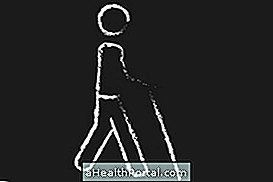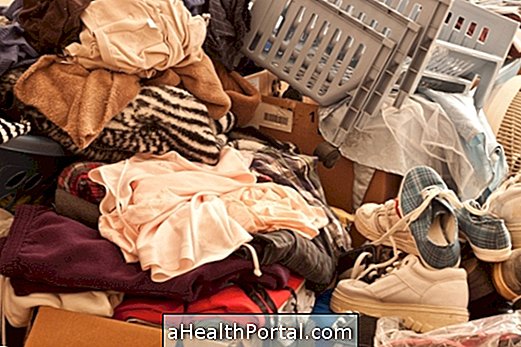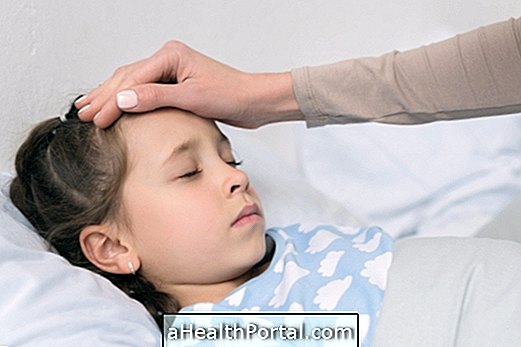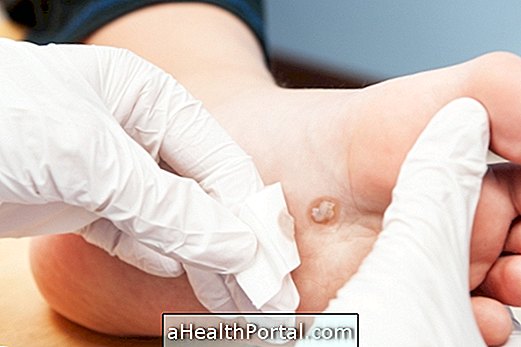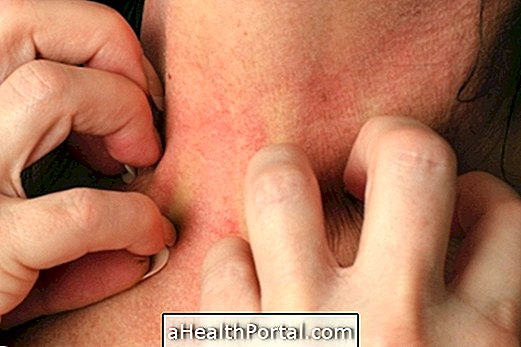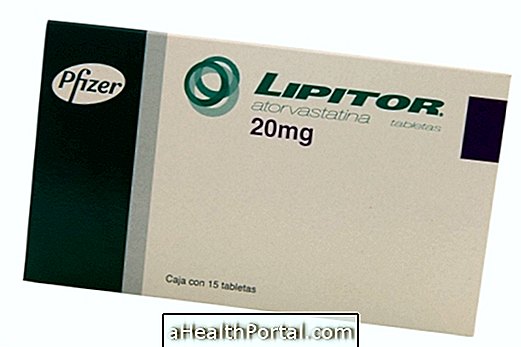Obsessive-compulsive disorder (OCD) is a mental illness characterized by the presence of two types of behavior:
- Obsessions : These are inappropriate or unpleasant, recurrent and persistent thoughts that arise in an undesired way, causing anxiety and suffering, such as illness, accidents or loss of loved ones;
- Compulsions : These are repetitive behaviors or mental acts, such as washing hands, organizing objects, checking locks, praying or counting, which can not be avoided, as well as being a way to reduce anxiety, a person believes that something bad can happen if do not.
This disorder may present different patterns in each person, such as associated with fear of contamination, need for recurrent checks or maintain symmetry, for example.
Although not curable, OCD treatment is able to effectively control symptoms in most cases through psychiatric and psychological counseling, use of antidepressant medications, and a type of therapy known as cognitive-behavioral therapy.

Main symptoms
Some of the major signs and symptoms of obsessive-compulsive disorder include:
- Being constantly concerned about cleanliness, and harassed by the presence of dirt, germs or contamination;
- Do not touch certain objects without washing your hands afterwards, or avoid places due to worries about dirt or illness;
- Washing your hands or bathing many times during the day;
- Constantly check windows, doors or gas;
- Worrying excessively about the alignment, order or symmetry of things;
- Use only clothing, accessories or objects of a certain color or pattern;
- Being overly superstitious, like not going in certain places or passing near objects, for fear that something bad will happen;
- Often the mind is invaded by unpleasant or unpleasant thoughts, such as illness, accident or loss of loved ones;
- Save unused objects such as empty boxes, shampoo packs or newspapers and papers.
It is not known exactly what causes OCD, and anyone can develop; however, there are several factors that together can determine their emergence, such as genetics, psychological factors such as misguided learning and distorted beliefs, excessive anxiety or stress, or even the education received.
How to confirm
To find out if you have OCD, the psychiatrist will do the clinical analysis and identify the presence of signs of obsession and compulsion, which usually last more than 1 hour a day, and cause suffering or injury to the person's social or professional life.
In addition, it should be noted that such symptoms do not occur due to the use of any medication, drug or the presence of a disease, nor do they occur due to the presence of another mental disorder, such as generalized anxiety, dysmorphic-body disorder, accumulation disorder, trichotillomania or eating disorders, schizophrenia or depression, for example.
These signs and symptoms may worsen or become more intense over time, and if OCD becomes severe, it can seriously interfere with a person's daily activities, compromising performance at school or at work, for example. Thus, in the presence of behaviors that indicate this disease, it is important to go to the consultation with the psychiatrist, for correct diagnosis and indication of the appropriate treatment.

Main types
The content of the thoughts or compulsions of the person with OCD may vary from person to person, and may be of several types, such as:
- Verification Compulsions : The person feels a compulsive need to check and check something as a way to avoid damages, such as fires or leaks. Some common checks include stove, gas, water taps, house alarm, locks, house lights, wallet or purse, route one way, disease research and symptoms on the internet or performing self-examinations.
- Obstructions of contamination : there is an uncontrollable need to clean or wash, and to avoid contaminations and dirt. Some examples are washing your hands several times a day, not being able to greet other people or going to places such as public toilets or doctors' offices, fear of contracting germs, and the need to clean excessively the house, especially kitchen and bathroom;
- Compulsions of symmetry : need to frequently correct the position of objects, such as books, in addition to wanting everything to be ordered in a millimeter, such as arranging clothes and shoes with the same pattern. It is also possible to have symmetry in touches or bumps, such as having to play with the right hand on what has been touched with the left or vice versa;
- Compulsions of counting or repetition : these are mental repetitions, such as sums and unnecessary divisions, repeating this act several times throughout the day;
- Aggressive Obsessions : In these cases, people are overly fearful of committing impulsive acts, which arise in thoughts, such as injuring, killing, or harming someone or unintentionally. These thoughts generate a lot of anguish, and it is common to avoid being alone or handling certain objects, like knives or scissors, having no confidence in itself;
- Compulsions of accumulation : this is the inability to discard some goods, considered useless, as packaging, old invoices, newspapers or other objects.
There are also other diverse categories, which include varieties of compulsions such as spitting, gesticulating, touching, dancing or praying, for example, or obsessions such as words, images or music that are intrusive and recurring.
How is the treatment done?
Treatment for obsessive-compulsive disorder is directed by the psychiatrist, with the ingestion of anti-depressant drugs such as Clomipramine, Paroxetine, Fluoxetine or Sertraline.
In addition, individual or group cognitive-behavioral therapy is also recommended because it helps the person cope with their fears and causes the anxiety to gradually disappear, as well as promotes the correction of distorted thoughts and beliefs. Check out more details on how TOC treatment is done.



